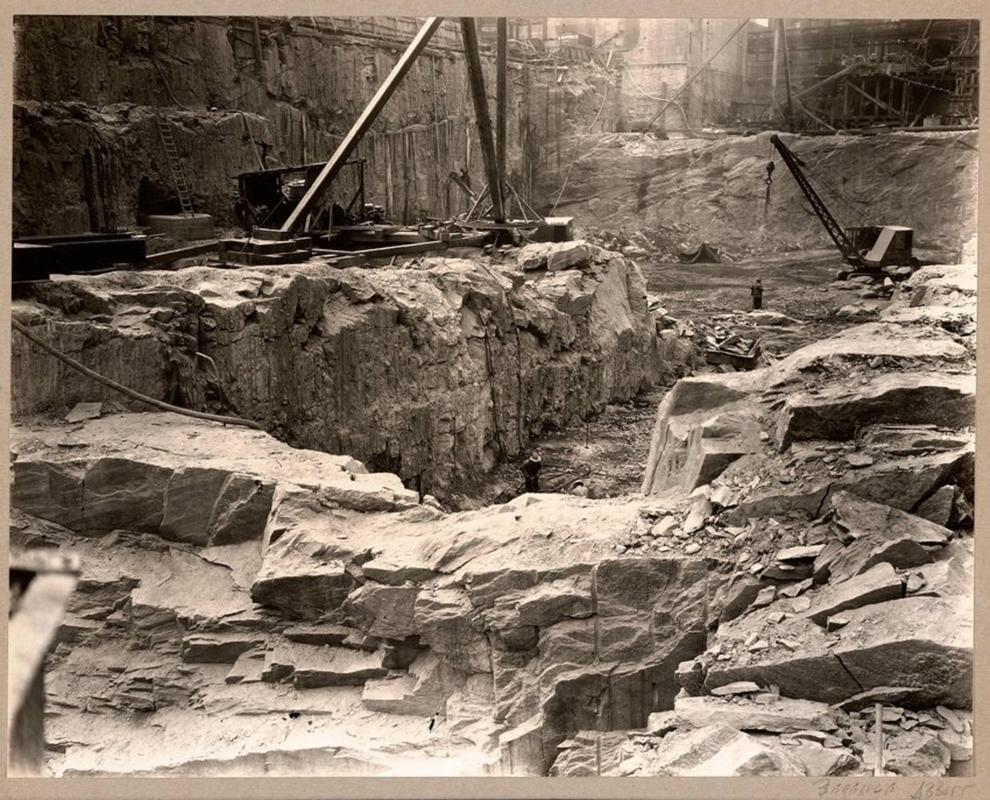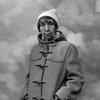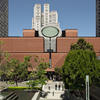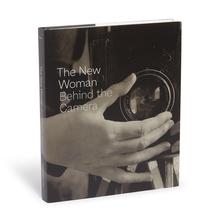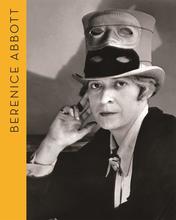More about The Construction of Rockefeller Center
- All
- Info
- Shop

Sr. Contributor
Given her obsession with buildings and architecture, it’s only natural that Abbott’s archives include so many images of now-famous New York construction sites.
She lived to document the city’s structures. She wasn’t in it to take pictures of construction workers, even if that fake photo of guys eating sandwiches on a beam in midair was also taken during the building of Rockefeller Center. Although that image was just a publicity stunt, it’s still charming. But remember, Berenice Abbott didn’t give a damn about being charming. She definitely would’ve criticized the photograph as “too kitschy.”
Abbott was there when construction began in 1931 and was there to document what it looked like when they broke ground. Her photographs provide a unique glance into the beginnings of the behemoth of a complex that Rockefeller Center has become and the place that would inevitably also give us 30 Rock. Its gorgeous Art Deco architecture and ornaments are rivaled only by the City Club of San Francisco.
She would also be interested in knowing that, today, the entirety of Rockefeller Center includes nineteen buildings that cover a collective twenty-two acres in Midtown Manhattan, stretching for three very expensive city blocks. Abbott would have been even more interested to know that the construction of the entire complex required over 40,000 workers. Just by being insanely rich, John D. Rockefeller Jr. selflessly created a whopping 75,000 jobs for American workers during the Great Depression. How sweet. In fact, he was a financier; all he did was finance stuff. Thanks to his dad John D. Rockefeller Sr. and his booming oil business that monopolized ninety percent of all oil production and refining in the United States by 1882, the younger Rockefeller had boatloads of money. He was the only family’s only son, which made him the sole heir to the family company.
Throughout his life, Rockefeller also threw money at – ahem, donated to – other prestigious architectural projects in New York. The Cloisters, the Metropolitan Museum of Art’s specialized offshoot for medieval art, exists because of all that sweet Rockefeller money. Rockefeller gave the Met money to buy the museum and collection, which had formerly belonged to another kooky rich white guy named George Grey Barnard. Rockefeller even gave forty of his own medieval works to the new branch of the institution because why wouldn’t he have a medieval art collection of his own? Rockefeller provided the land that is now Fort Tryon Park in upper Manhattan, and he even purchased the land across the Hudson River in New Jersey to provide an unfettered, natural landscape to view from the Cloisters.
His involvement with art institutions didn’t end there, although the second museum venture was really his wife’s doing. Abby Aldrich Rockefeller teamed up with two other women in the late 1920s to create a proper modern art museum in the United States. Aldrich Rockefeller, Lillie P. Bliss and Mary Quinn Sullivan were so inspired by the European art they saw at the 1913 Armory Show, including groundbreaking works like Duchamp’s Nude Descending a Staircase, No. 2, that they established the nation’s first modern art museum. In 1929, the Museum of Modern Art was born. Even though Abbott’s image shows just one aspect of how Rockefeller impacted New York, it’s pretty symbolic of everything else he did, too.
Sources
- Biography.com. “John D. Rockefeller Jr. Biography.” A&E Television Networks. July 7, 2014. https://www.biography.com/people/john-d-rockefeller-jr-9461357. Accessed September 24, 2018.
- PBS. “Biography: John D. Rockefeller, Junior.” American Experience. The Rockefellers. https://www.pbs.org/wgbh/americanexperience/features/rockefellers-johnj…. Accessed September 24, 2018.
- Serafino, Jay. “10 Fascinating Facts About Lunch Atop a Skyscraper.” Mental Floss. June 8, 2017, http://mentalfloss.com/article/502243/10-fascinating-facts-about-lunch-…. Accessed September 24, 2018.
- The Metropolitan Museum of Art. “The Cloisters: A History.” Press resources. May 15, 20016. https://www.metmuseum.org/press/news/2006/the-cloisters-a-history. Accessed September 24, 2018.
- The Museum of Modern Art. “The Museum of Modern Art history.” About. https://www.moma.org/about/who-we-are/moma-history. Accessed September 24, 2018.
- Wikipedia. “Rockefeller Center.” https://en.wikipedia.org/wiki/Rockefeller_Center. Accessed September 24, 2018.

